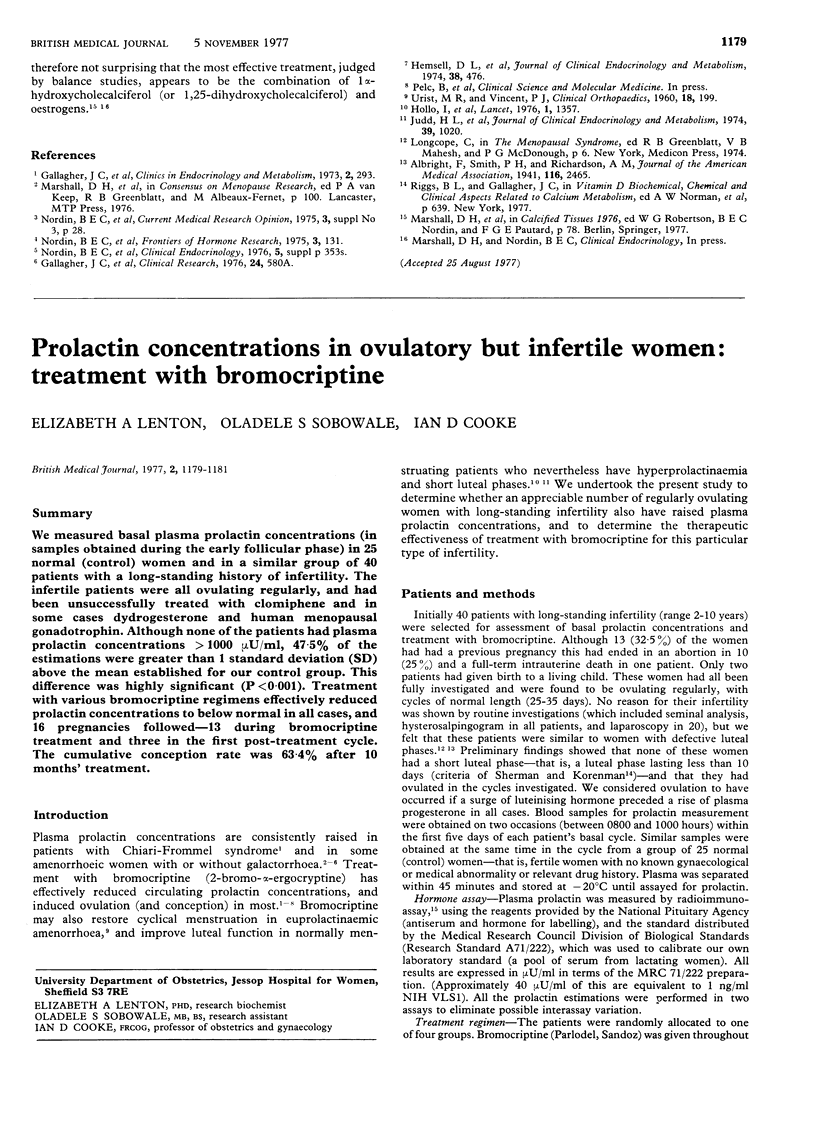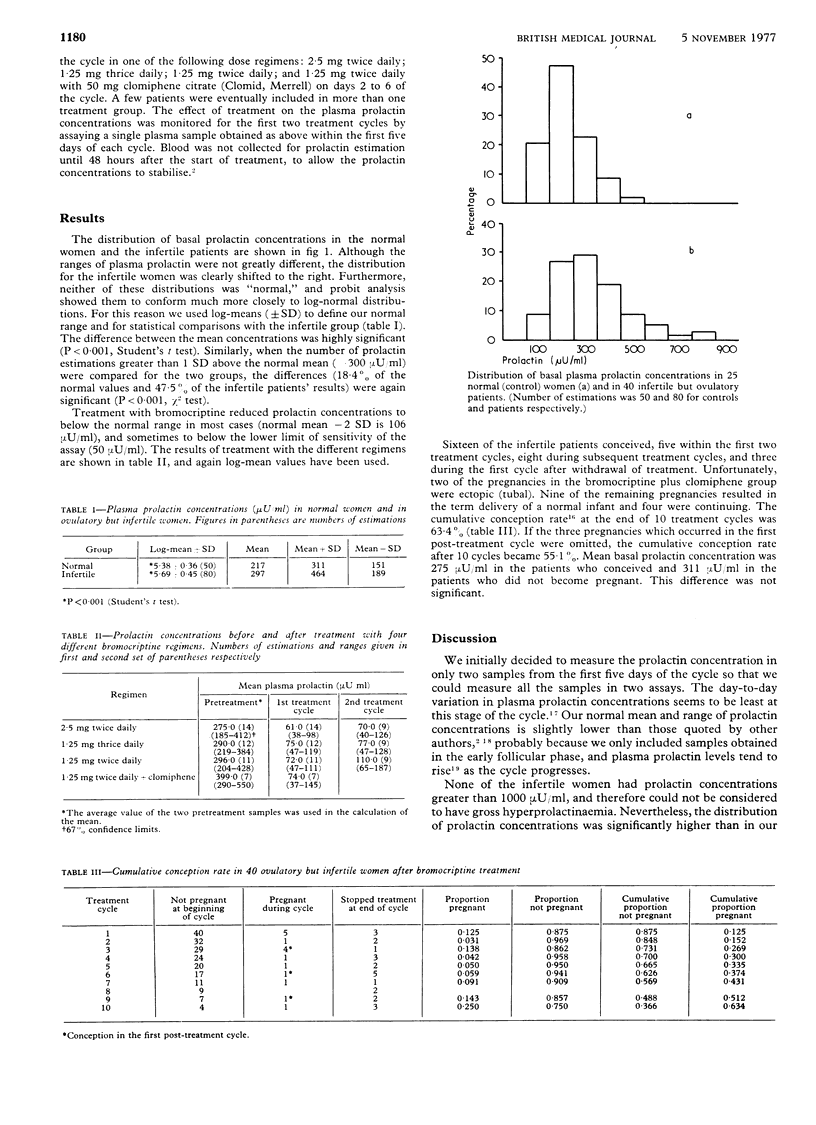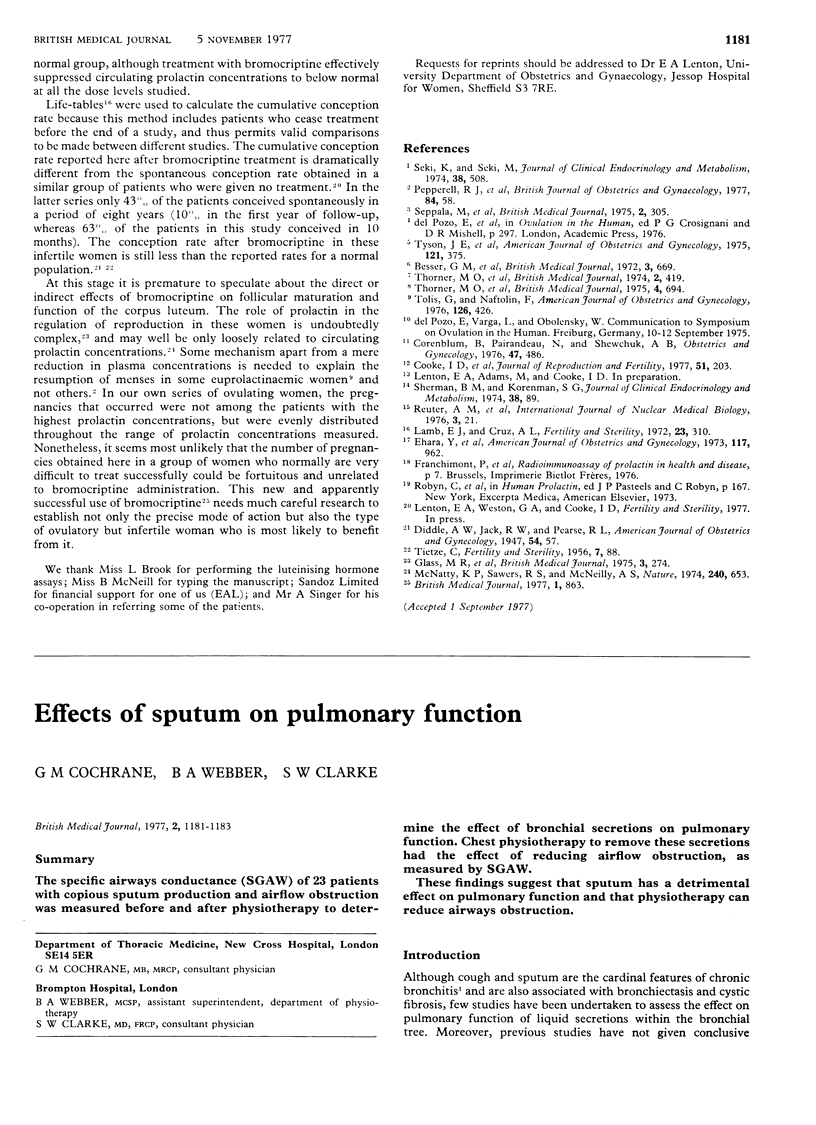Abstract
We measured basal plasma prolactin concentrations (in samples obtained during the early follicular phase) in 25 normal (control) women and in a similar group of 40 patients with a long-standing history of infertility. The infertile patients were all ovulating regularly, and had been unsuccessfully treated with clomiphene and in some cases dydrogesterone and human menopausal gonadotrophin. Although none of the patients had plasma prolactin concentrations greater than 1000 muU/ml, 47.5% of the estimations were greater than 1 standard deviation (SD) above the mean established for our control group. This difference was highly significant (P less than 0.001). Treatment with various bromocriptine regimens effectively reduced prolactin concentrations to below normal in all cases, and 16 pregnancies followed-13 during bromocriptine treatment and three in the first post-treatment cycle. The cumulative conception rate was 63.4% after 10 months' treatment.
Full text
PDF


Selected References
These references are in PubMed. This may not be the complete list of references from this article.
- Corenblum B., Pairaudeau N., Shewchuk A. B. Prolactin hypersecretion and short luteal phase defects. Obstet Gynecol. 1976 Apr;47(4):486–488. [PubMed] [Google Scholar]
- Lamb E. J., Cruz A. L. Data collection and analysis in an infertility practice. Fertil Steril. 1972 May;23(5):310–319. [PubMed] [Google Scholar]
- McNatty K. P., Sawers R. S., McNeilly A. S. A possible role for prolactin in control of steroid secretion by the human Graafian follicle. Nature. 1974 Aug 23;250(5468):653–655. doi: 10.1038/250653a0. [DOI] [PubMed] [Google Scholar]
- Pepperell R. J., Evans J. H., Brown J. B., Smith M. A., Healy D., Burger H. G. Serum prolactin levels and the value of bromocriptine in the treatment of anovulatory infertility. Br J Obstet Gynaecol. 1977 Jan;84(1):58–66. doi: 10.1111/j.1471-0528.1977.tb12469.x. [DOI] [PubMed] [Google Scholar]
- Sherman B. M., Korenman S. G. Measurement of plasma LH, FSH, estradiol and progesterone in disorders of the human menstrual cycle: the short luteal phase. J Clin Endocrinol Metab. 1974 Jan;38(1):89–93. doi: 10.1210/jcem-38-1-89. [DOI] [PubMed] [Google Scholar]
- Thorner M. O., Besser G. M., Jones A., Dacie J., Jones A. E. Bromocriptine treatment of female infertility: report of 13 pregnancies. Br Med J. 1975 Dec 20;4(5998):694–697. doi: 10.1136/bmj.4.5998.694. [DOI] [PMC free article] [PubMed] [Google Scholar]
- Thorner M. O., McNeilly A. S., Hagan C., Besser G. M. Long-term treatment of galactorrhoea and hypogonadism with bromocriptine. Br Med J. 1974 May 25;2(5916):419–422. doi: 10.1136/bmj.2.5916.419. [DOI] [PMC free article] [PubMed] [Google Scholar]
- Tolis G., Naftolin F. Induction of menstruation with bromocryptine in patients with euprolactinemic amenorrhea. Am J Obstet Gynecol. 1976 Oct 15;126(4):426–429. doi: 10.1016/0002-9378(76)90631-1. [DOI] [PubMed] [Google Scholar]


